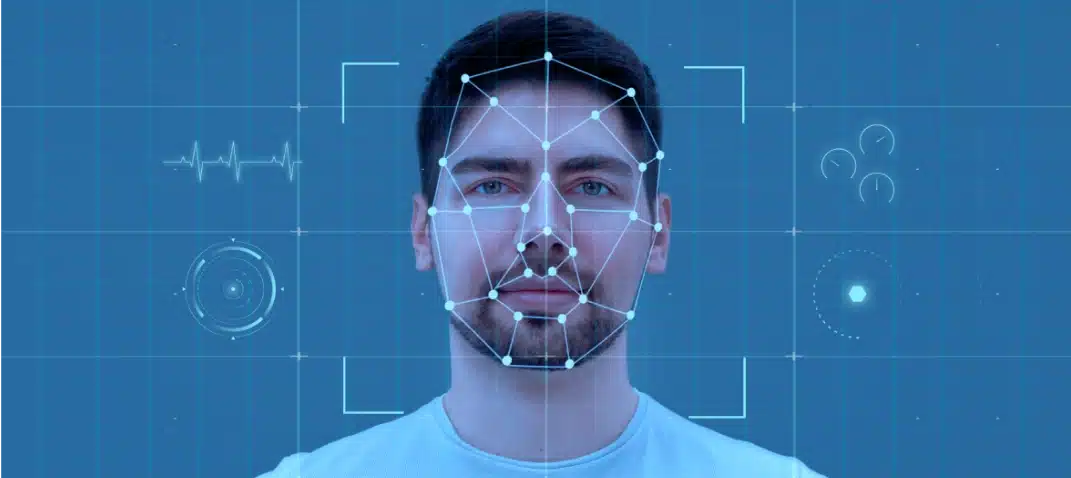
Table of Contents
ToggleIs the Biometric Screening Dead? AI + Bloodless Testing is Here
Does anyone actually like biometric screenings?
Let’s be honest, no one likes them. Fasting, finger pricks, lab visits, disrupted workdays, low participation, and high costs? It’s time to rethink how wellness screenings are done.
Yet, the traditional biometric screening has been a core part of corporate wellness programs for decades. But that’s about to change.
AI-powered, bloodless biometric screenings can deliver highly accurate, real-time results in under a minute… using just a smartphone.
Are you still doing biometric screenings the old way?
If you’re not at least exploring smarter, faster, cost-effective and more employee-friendly alternatives, your wellness strategy (and your budget) might already be falling behind.
But it doesn’t have to be that way. AI + bloodless biometric screening is here.
In this article, you’ll learn:

- Why traditional screenings are outdated for wellness programs
- How a smartphone camera + AI can do bloodless biometric screenings
- What health data bloodless screening can measure with 94% accuracy
- 4 data-driven reasons to use bloodless
biometric screenings
Traditional Biometric Screenings: Effective But Outdated
Yes, biometric screenings still serve a purpose. They…
- Help identify high-risk individuals within your employee population, so you can help them get the coaching, interventions and healthcare they need.
- Give you evidence-based data about population health, that helps you make informed decisions about wellness program interventions and incentives to promote health, prevent disease and control healthcare costs.
But in the post COVID-era, the traditional biometric screening process is outdated.
- It disrupts the workday. Scheduling, fasting, and off-site appointments take time and energy.
- It’s expensive. Onsite biometric screening events and lab processing come with a hefty price tag.
- They’re underused. Once-a-year screenings aren’t enough to drive behavior change, especially with low participation rates.

Nearly half of large employers still offer biometric screenings, but it’s typically
just once a year.1 And the average participation rate is just 23 percent.
Not exactly a great source of data or ROI, right?
The Smarter Alternative: Bloodless Testing + AI
Now imagine this instead:
You send out an email or text message inviting your employees to complete a biometric screening, WITHOUT…
- A finger prick
- Blood draw
- Lab processing
- Scheduling headaches
- Costs for staff and labwork
Instead…
- Your employee opens an app and holds up their phone for 30-60 seconds looking into the camera.
- In less than a minute, they receive a personalized health report.
- And you have real-time access to population-health data to help you make informed decisions for your wellness program.
 This is bloodless biometric screening powered by AI, and it’s only available through the FitLyfe 360 platform.
This is bloodless biometric screening powered by AI, and it’s only available through the FitLyfe 360 platform.
It’s designed to give your employees quick, convenient access to wellness data using their smartphone or a company kiosk. And it can save you time and money.
Smartphone Tech for Bloodless Biometric Screenings
Wondering how it works, what it can measure, and how accurate it is?
Here’s what you need to know…
- Frustration. 74% of users reported frustration with navigation, making it difficult to complete tasks.
- Overwhelmed. 66% said apps were too complex, leading to overwhelm and drop-off.
- Technical issues. 50% stopped using wellness apps due to technical issues like bugs and slow performance.
The fix: Prioritize UX & personalization
The best corporate wellness software should be:
- rPPG. The technology that makes bloodless biometric screening possible is called remote photoplethysmography (rPPG):
- The Camera inside a smartphone, tablet, or screen (like a digital kiosk) uses rPPG to detect tiny changes in facial skin color caused by blood flow.
- Analysis. These changes are analyzed using AI to estimate health metrics, without any physical contact or lab equipment.
- Results. In just 30 to 60 seconds, your employees can screen themselves wherever they are and get results in about five minutes.
Accuracy for rPPG bloodless biometric screenings
Even a traditional blood draw or finger-prick biometric screening isn’t perfect.
There’s still a small chance for error from something like contamination, a processing mistake, lost labwork, or some other human error.
So how accurate is a bloodless biometric screening using rPPG?
In a recent study, researchers found that smartphone rPPG measured heart rate and blood pressure with 93 to 97 percent accuracy.
A separate study published in the journal Nature found that rPPG combined with machine learning, can accurately measure:
- Vital signs like heart rate using just a video camera
- Without any physical contact or sensors needed.
A bloodless biometric screening can measure:
- Blood pressure
- Heart rate
- Breathing rate
- Oxygen saturation
- A1C and glucose risk (non-diagnostic)
- Stress level and stress index
- Cardiovascular disease risk
- Heart age
- Overall wellness score

Limitations:
A bloodless biometric screening can’t measure cholesterol levels. Plus, it’s not intended to provide medical advice. It’s for educational purposes only. (Our lawyers made us say that).
Convenience & cost:A bloodless biometric screening allows your employees to measure their health status every day.
And that’s without any additional costs or the typical time-location limits of traditional biometric screenings.
Maybe the traditional biometric screening used in most wellness programs is on the way out.
4 Data-Driven Reasons to Use Bloodless Biometric Screenings
Why keep using outdated methods when a better one is available?
Here are four data-driven reasons to consider leveraging the power of AI and moving to bloodless biometric screenings.
1. Lower cost
Bloodless biometric screenings can be as low as $0.07 to $5 each, depending on your population size.
- Traditional biometric screenings (both on and off-site), cost an estimated $45 to $70 per employee/
2. Less disruptions
No labs, no appointments, no on or off-site disruptions. That’s huge, right?
- Instead of losing half a work day and lost productivity common with the traditional biometric screening, rPPG tech makes it possible to complete screening and get results in minutes.
- In a recent study, Harvard researchers found that making your wellness initiatives easier and more accessible improves outcomes.
3. Higher engagement
It’s simple and mobile. Employees are more likely to participate when all they have to do is pick up their phone. No appointment or trip to a clinic required.
- One recent study found that using digital health screening tools led to increased engagement, reduced workload, and better risk identification among employees.
4. Real-time data
Your employees get fast, personalized results. And you get fresh insights, not just an annual snapshot.
- Results are processed by AI and reviewed by a human, typically within 10 minutes.
- And that makes a big difference. Employers that stick with the status quo are missing opportunities to innovate and modernize their wellness strategies.
Are Traditional Biometric Screenings Dead?
Maybe not officially. Many wellness programs will stick with the status-quo and traditional biometric screenings, because that’s the way it’s always been done.
But that’s going to change.
AI-powered, bloodless screening gives you a powerful, more cost-effective way to reach more employees with less effort.
It removes barriers, boosts engagement, and gives you real-time population-health data to help your employees and improve wellness program ROI.
See FitLyfe 360 in action





